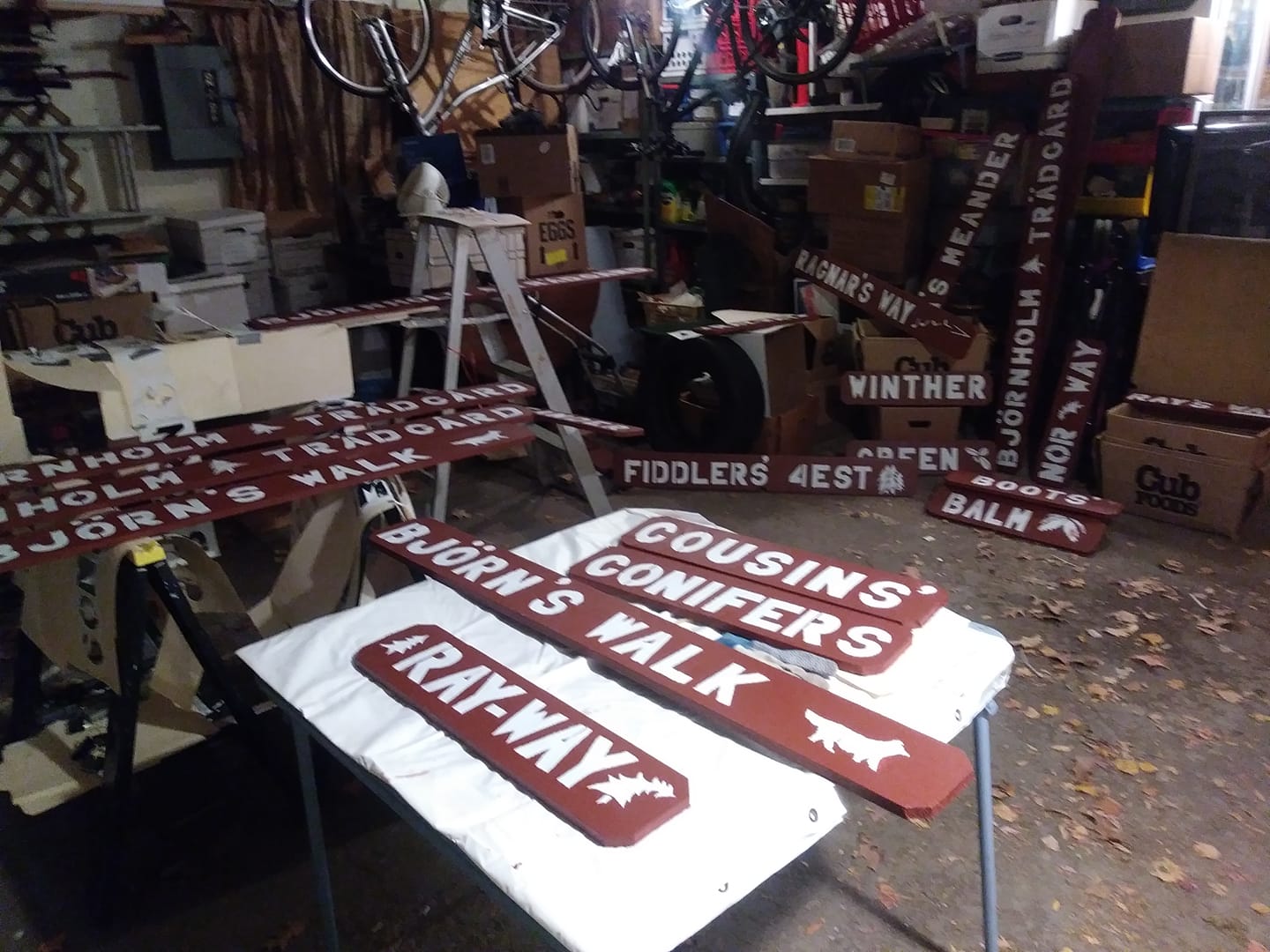OCTOBER 15 2020 – A few days ago I wrote about the art of the stencil. Yesterday, I moved on to the science of the stencil; that is, I took paint to stencil and boards on which I’d intended to make two dozen trail and landmark signs for my tree garden.
The “art” part was fun and whimsical but also demanding, as I measured letter elements and spacing down to 1/16 tolerances, then cut out some 160 letters. I also devised six different icons that I needed to draw and cut. This latter endeavor was like creating photographic negatives, which required a “brain reversal” of sorts.
Having . . . prepared all my stencils and sign boards; procured special paint and rollers; set up saw-horses, drop cloths, and equipment layout . . . I was ready for launch. I pretended that the whole operation was a re-enactment of NASA’s mission to the moon. The “art” phase of my stencils had been the development stage, the theoretical engineering and mock-ups of the rocket, capsule and lunar module (originally, “LEM,” remember?). But now I was on the launching pad at Cape Kennedy, about to put all the theory to the test. No one had ever landed on the moon—no one (that I know of) in my family had ever stenciled two dozen, two-, four-, and five-foot-long outdoor signs. Would all my work fly? When I put roller brush-with-paint to my stencil covered boards, would the desired goal be achieved? Or would the paint run, the stencils shift, boards tumble, project . . . crash?
Like the Apollo 11 astronauts strapped into Columbia atop the Saturn V rocket that would hurl them into space, I stood nervously in our garage, leaning over my stencils, paint roller in hand, ready to test my “stencil art.” I counted down—“Ten, nine, eight . . .” At “zero,” I ran the roller across the stencil on my longest sign. I could feel the G-forces pulling hard as the roller accelerated down the length of the 60-inch board.
Seconds later, I carefully removed the stencil to see the result . . . and . . .
The inside of our garage was no longer Mission Control for Apollo 11. It was the Wright Brother’s barn at Kitty Hawk. You don’t reach the moon by using stencils. My crude inaugural flight was brief and didn’t end in disaster, but it opened lots of room for improvement. I quickly adjusted my technique—and kept adjusting—until I figured out better the “science” of stenciling.
In the end, my signs “work.” If they’re not perfect, I devised the means to render them acceptable for their intended purpose.
As I developed a better understanding of the “science” of stenciling, I gained a new appreciation for engineering pioneers; for dreamers who have an idea, obsess about it, put pencil to drawing board, tools to a proto-type, and then . . . put their theories, their drawings, their assembly, to the test. “Will this thing actually [fly], [float], [find its way home]?”
And what satisfaction comes in finding that . . . it does! Today, Kitty Hawk. Tomorrow—the moon!
(Remember to subscribe to this blog and receive notifications of new posts by email.)
© 2020 by Eric Nilsson
